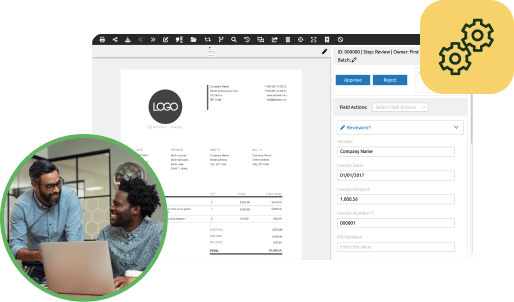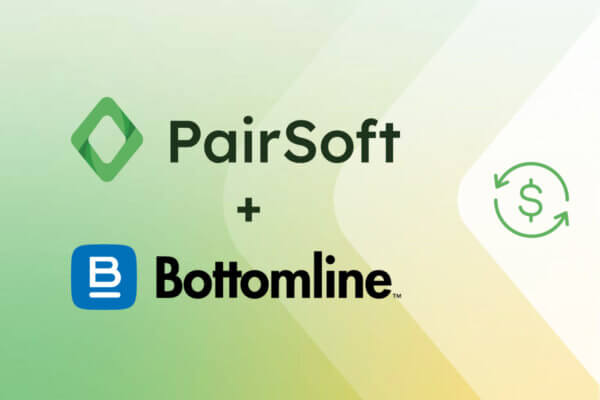It’s no secret that data is the key to well-informed financial, fundraising, and marketing decisions. When you implement information from real constituents or customers in your strategy, you can personalize your efforts to your audience, leading to better results and stronger relationships.
However, data is only useful if it’s clean. As data becomes outdated or erroneous, it can cause you to make decisions based on false information that may weaken your operations and communications.
The solution? Leveraging data hygiene practices to make cleaning your database a routine. Check out these top methods for ensuring your database is accurate, up-to-date, and complete.
1. Database Audit
Just as you audit your financial records, you should also audit your database. A database audit lays the foundation for proper data hygiene, allowing you to assess the current state of your data and determine the next steps.
Begin the audit process by deciding your goals. What exactly are you trying to accomplish with your data, and what data points will you need to leverage? For example, if you’re launching an email marketing campaign, you’ll want to ensure you have updated, accurate email addresses for your audience members.
Then, identify problem areas within your constituent relationship management platform (CRM). You may find that you only have email addresses for 70% of your audience, meaning you need to find a way to acquire contact information for the other 30%. Additionally, you may notice that 40% of the email addresses you do have haven’t been updated in several years. In this case, you should plan to update this information to ensure your communications reach the right people.
2. Data Governance
Once you’ve audited your database and determined how to move forward, delegate data responsibilities to different team members. For instance, you may distribute the following tasks amongst your staff to clean up email address data:
- Removing invalid or incorrect email addresses
- Merging duplicate email records
- Verifying email domain validity
- Deleting inactive email addresses
- Segmenting email lists
Alternatively, you may assign the role of data steward or leader to one person in each department to ensure their data stays organized and accurate—regardless of the current projects or initiatives you’re working on.
For instance, you may have different data stewards for your fundraising, marketing, programming, finance, and volunteer management departments. This approach also allows you to limit the number of users accessing sensitive information, which can bolster data security.
3. Data Standardization
Standardizing data entry can also help resolve and prevent inconsistencies. Work with your team to develop data entry standards for the following data types:
- Mailing addresses. If you’re sending direct mail or using location-based marketing, standardizing mailing addresses is especially important. Decide if you’d like your team to use address abbreviations like “St.,” “Ln.,” and “Rd.” or spell out the full words “Street,” “Lane,” and “Road.”
- Phone numbers. Reach your contacts more efficiently with phone number standardization. Determine if you’ll put parenthesis around the area code like this: (123) 456-7890. Or, you may use dashes instead: 123-456-7890. Additionally, decide if you need to keep the country code for all phone numbers or omit it if all contacts are in the same country.
- Titles and abbreviations. Will you spell out full titles like “Chief Executive Officer” and “Senior” or use their abbreviated counterparts “CEO” and “Sr.”? Ultimately, it doesn’t matter which you choose as long as everyone is on the same page.
To further prevent inconsistencies, automate data entry whenever possible. For instance, PairSoft’s Accounts Payable (AP) Automation tool enables you to automate donation data entry and record it in your financial systems to minimize errors and maximize efficiency.
4. Data Correction and Validation
In some instances, you may not be able to assess the accuracy of your data just by looking at it. Data correction and validation services enable you to compare your first-party information to an external source or call upon a data provider to verify its accuracy.
For example, data providers can assist with email address validation by identifying valid, invalid, deactivated, and improperly formatted email addresses. They can then provide insights into the potential for deliverability of each email address.
Another service data providers can offer is postal address cleansing. Look for a provider that uses United States Postal Service systems like Coding Accuracy Support System (CASS™) Processing, Delivery Sequence File Second Generation (DSF2®), and National Change of Address Linking System (NCOALink®) to standardize, validate, and update postal address records.
5. Data Suppression
Getting rid of unhelpful or unnecessary data can streamline your database and keep it as actionable as possible. Work with a data provider to unlock suppression services like:
-
- Do Not Mail Suppression, which allows you to remove the names and physical or email addresses of people who have requested not to receive direct marketing solicitations
- Prison Suppression, which removes addresses associated with federal prisons, state prisons, county correctional facilities, and city jails
- Deceased Suppression, which removes the records of deceased individuals from your database to prevent sending the decedent’s family unwanted communications
- Deduplication, which removes names, addresses, email addresses, and phone numbers that appear in your system multiple times
Data suppression also helps ensure you follow data privacy regulations. Make sure to also follow U.S. texting laws by keeping track of SMS opt-ins and opt-outs in your database. As Mogli’s SMS opt-in and opt-out guide explains, “Failure to acquire written consent and comply with these laws can result in fines, penalties, and other legal trouble for your business.”
6. Data Enrichment
If your database lacks crucial information that would help you reach or understand your audience, you’ll need to fill those gaps. Data enrichment is the process of supplementing your data with third-party information that adds more value and context to your database.
Deep Sync’s data append guide explains that you can enrich your database with the following data types:
- Demographic data like age, gender, and level of education to make personalized recommendations to audience members
- Phone data to reach audience members via phone
- Email data to reach audience members via email
- Firmographic data like industry, size, market segment, and location to learn more about business contacts
- Geographic data to leverage location-based marketing
Going back to our initial example, you may work with a data provider to enrich your database with email addresses for records without this contact information. That way, you can maximize your email reach without manually collecting email addresses. Just make sure to partner with a data provider that follows all data privacy laws and regulations.
Clean data allows organizations and businesses of all types to make better decisions and provide a better experience for their audiences. By making data hygiene a routine, you can be confident that you’ll reach your audience and match them with relevant opportunities that keep them around.






